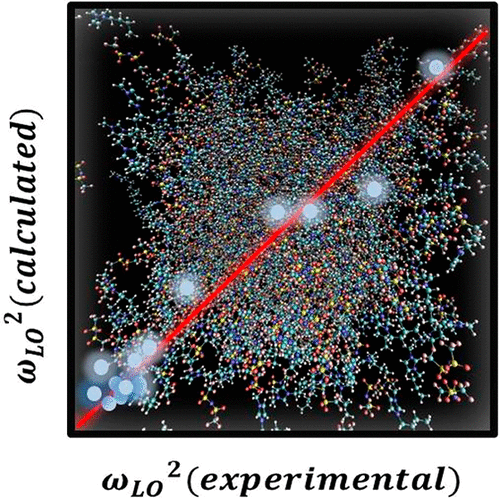当前位置:
X-MOL 学术
›
J. Phys. Chem. B
›
论文详情
Our official English website, www.x-mol.net, welcomes your feedback! (Note: you will need to create a separate account there.)
Pseudo-Optical Modes in Room-Temperature Ionic Liquids
The Journal of Physical Chemistry B ( IF 3.3 ) Pub Date : 2020-03-23 , DOI: 10.1021/acs.jpcb.0c00890 Vitor H. Paschoal 1 , Mauro C. C. Ribeiro 1
The Journal of Physical Chemistry B ( IF 3.3 ) Pub Date : 2020-03-23 , DOI: 10.1021/acs.jpcb.0c00890 Vitor H. Paschoal 1 , Mauro C. C. Ribeiro 1
Affiliation

|
The terahertz spectrum encodes information about dynamics, structure, and intermolecular interactions of liquids being probed both experimentally and computationally by techniques such as Raman and far-infrared spectroscopies and molecular dynamics (MD) simulation. In the case of room temperature ionic liquids (RTILs), there has been a debate whether a mode observed at about 1.5–2.7 THz (50–90 cm–1) is due to a quasi-lattice structure or the formation of complex ions. Here we show through the analysis of Raman and far-infrared spectra and MD simulation of a typical RTIL that this mode has a collective optic-like character. Then, employing a simple model based on the theory for optical phonons in crystals, we show that a correlation between the frequency of this mode and material parameters holds for different RTILs. These results, which encompass a wide range of samples, reinforce a quasi-lattice view of the liquid phase.
中文翻译:

室温离子液体中的伪光学模式
太赫兹光谱编码有关通过拉曼和远红外光谱学以及分子动力学(MD)模拟等技术在实验和计算上探测到的液体的动力学,结构和分子间相互作用的信息。对于室温离子液体(RTIL),一直存在争论,即是否在约1.5–2.7 THz(50–90 cm –1)是由于准晶格结构或复合离子的形成。在这里,我们通过分析拉曼光谱和远红外光谱以及典型RTIL的MD模拟表明,该模式具有类似光学的集体特征。然后,采用基于晶体中的光子理论的简单模型,我们表明该模式的频率与材料参数之间的相关性适用于不同的RTIL。这些结果涵盖了广泛的样品范围,增强了液相的准晶格视图。
更新日期:2020-03-24
中文翻译:

室温离子液体中的伪光学模式
太赫兹光谱编码有关通过拉曼和远红外光谱学以及分子动力学(MD)模拟等技术在实验和计算上探测到的液体的动力学,结构和分子间相互作用的信息。对于室温离子液体(RTIL),一直存在争论,即是否在约1.5–2.7 THz(50–90 cm –1)是由于准晶格结构或复合离子的形成。在这里,我们通过分析拉曼光谱和远红外光谱以及典型RTIL的MD模拟表明,该模式具有类似光学的集体特征。然后,采用基于晶体中的光子理论的简单模型,我们表明该模式的频率与材料参数之间的相关性适用于不同的RTIL。这些结果涵盖了广泛的样品范围,增强了液相的准晶格视图。

























 京公网安备 11010802027423号
京公网安备 11010802027423号